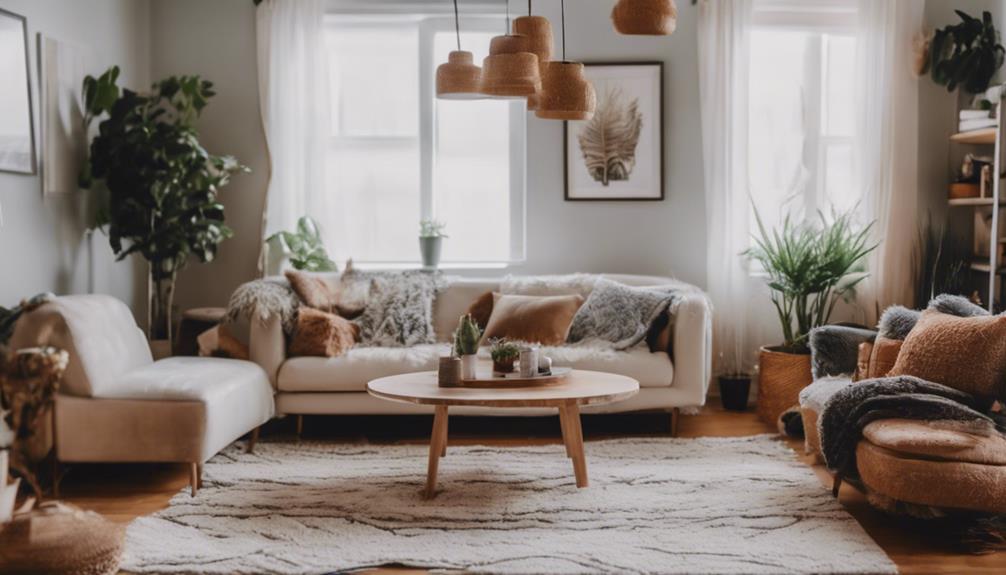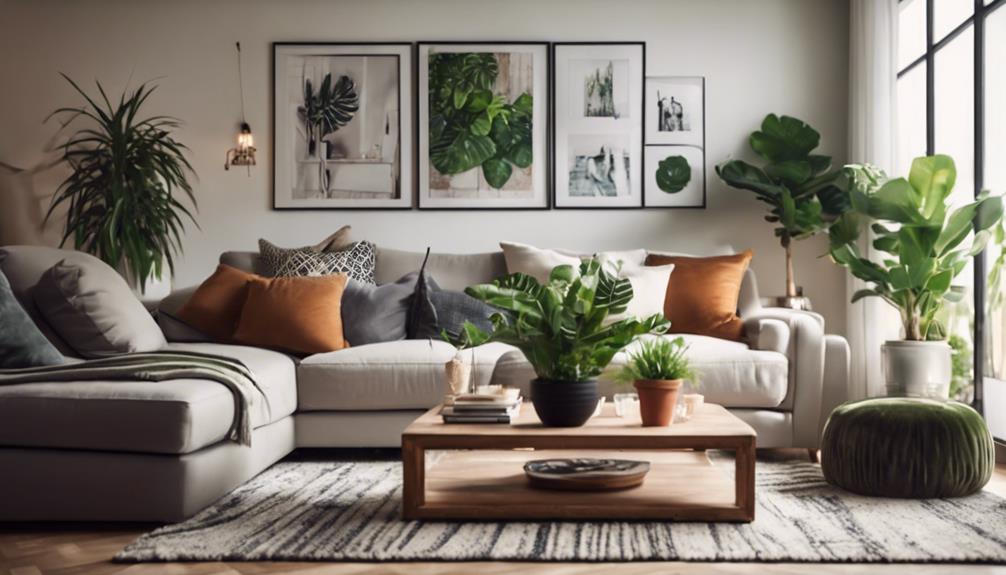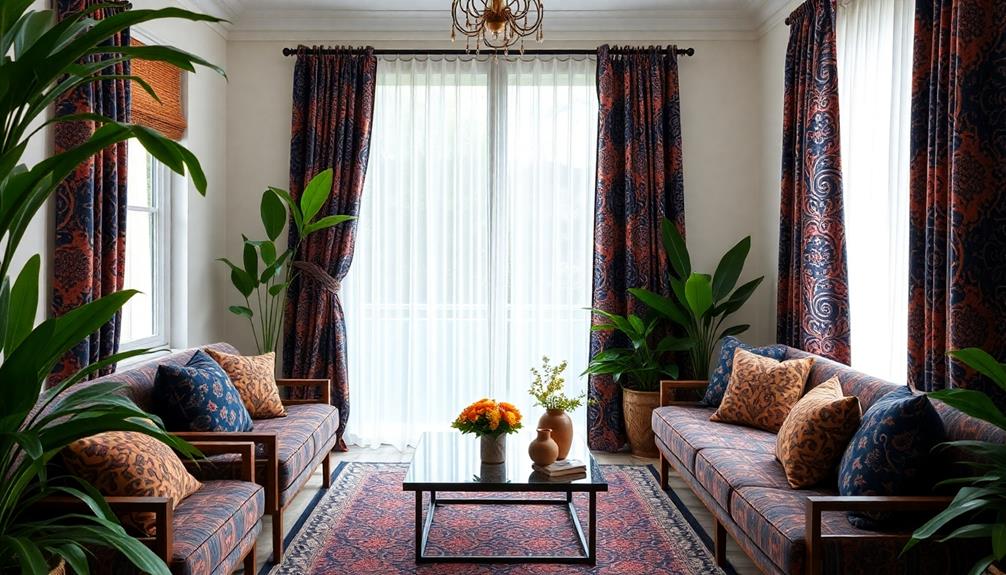When you are decorating your home, begin by finding inspiration from magazines and websites. Take a look at your current furniture and make note of areas that could use improvement. Infuse your own personality into your decor choices and skillfully mix colors and textures. Combine different design styles for a cohesive appearance. Make sure to prioritize functionality while adding finishing touches like throw pillows and metallic accents. Add personal touches to each room with family heirlooms and artwork. Ensure that the layout flows well and reflects your personal style. By following these expert tips, you can create a warm and visually appealing space that suits your preferences and requirements. Exploring home decor ideas to stay updated on current trends and styles can also be beneficial in creating a well-designed space. Play around with different layout options and furniture arrangements to determine what works best for your home. Remember to stay true to your own style and design a space that is both cozy and inviting. With the right inspiration and a thoughtful approach, you can turn your home into a personalized sanctuary that showcases your unique personality. You can find more information on how to choose the right home decor here.
Key Takeaways
- Consider your personal style and preferences to reflect your personality in each room.
- Choose a color scheme based on the room's purpose and desired ambiance.
- Mix textures and patterns for depth and visual interest.
- Prioritize functionality and practicality in decor choices.
- Personalize each room with unique accessories and items that resonate with you.
Inspiration and Planning
To start your home decor journey, begin by seeking inspiration and making a clear plan for each room. Look to magazines, Pinterest boards, and home decor websites for ideas on design, color schemes, and decorating styles that resonate with you. Take note of furniture pieces and architectural features in your home to guarantee a cohesive look. Consider consulting interior designers for expert advice on how to best utilize your space.
As you gather inspiration, create mood boards or collect fabric swatches and paint samples to visualize how different elements can come together harmoniously. Pay attention to details that catch your eye, such as unique color combinations or patterns, to steer your decorating decisions.
Make a list of key areas within each room that you want to focus on upgrading or enhancing to prioritize your decor efforts effectively. By planning meticulously and drawing inspiration from various sources, you can create a personalized and stylish living space that reflects your taste and personality.
Style and Color Selection
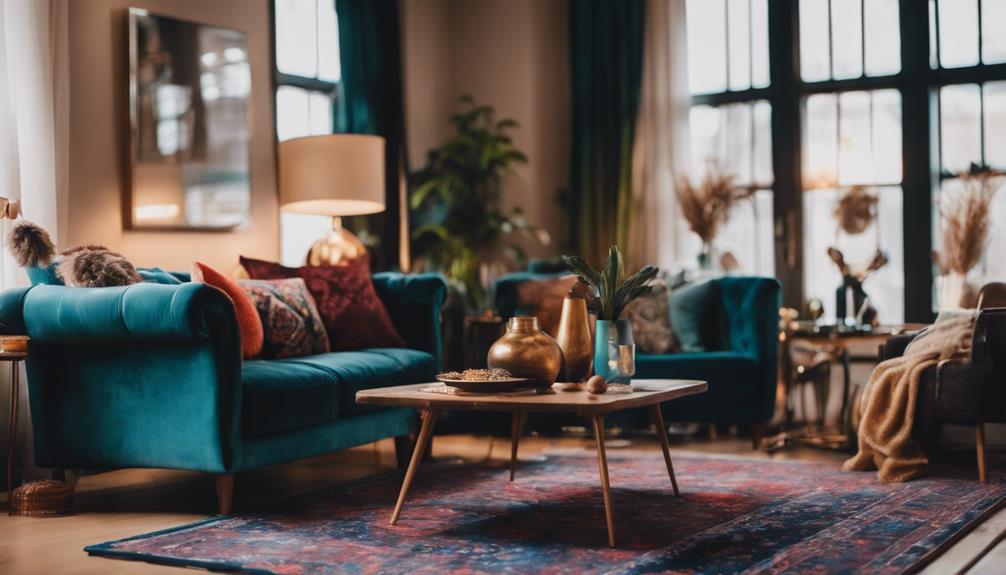
When selecting styles and colors for your home decor, it's crucial to ponder a cohesive design theme, mirroring your personality and mood through your selections.
Opt for a color scheme that spans from soothing neutrals to vibrant shades for a hint of excitement, and blend textures and patterns strategically to introduce dimension and visual appeal.
Keep in mind to include practical factors in your decor choices to guarantee that your space not only appears fantastic but also meets your daily requirements efficiently.
Color Scheme Selection
Start by drawing inspiration from interior design styles and color theory to craft a cohesive color scheme that suits your personal taste and room's purpose.
When selecting a color scheme for your home decor, consider the following:
- Reflect Your Personality: Choose colors that resonate with your style and preferences to create a space that feels uniquely yours.
- Consider Room's Purpose: Select colors based on the function of the room to evoke the desired mood and atmosphere.
- Balance with Three Colors: Utilize the three-color formula to harmonize wall colors, furniture hues, and accessory tones for a cohesive look.
- Experiment with Bold and Neutral Tones: Mix bold colors for a pop of excitement and neutrals for a sense of calm to create visual interest and balance in the room.
Remember to also take into account how lighting influences the colors in the space, whether natural or artificial, to achieve the desired ambiance.
Style Diversity
Considering different design themes and color palettes can help you achieve a cohesive and personalized look in your home decor. When selecting a specific design theme, like modern or bohemian, from an interior design company, think about how it will fit with your existing furniture and overall aesthetic.
Mixing formal and casual materials can add depth to your decor and showcase your personal style. Start by redecorating one room at a time, gradually implementing your chosen style throughout the house for a well-curated look. Begin with intimate spaces like the bedroom to experiment with your decor choices before moving on to high-traffic areas like the living room.
In small spaces, don't shy away from bold colors as they can make a statement, while neutral tones work well in larger rooms to create a calming atmosphere. By following these design tips, you can create a diverse yet harmonious home decor style that reflects your personality.
Functional Considerations
Choosing decor for a room involves considering its function to make sure practicality meets your needs. When it comes to interior design, incorporating the right style and color scheme can truly transform a space.
Here are some tips to help you make the best choices for your home:
- Reflect Your Personality: Choose a style that resonates with you and complements the purpose of the room. This will create a cohesive look that feels authentic to you.
- Enhance Mood and Ambiance: Select a color scheme that enhances the mood and ambiance of the space. Colors can have a significant impact on how a room feels and functions.
- Utilize Psychological Effects: Consider the psychological effects of colors when choosing furniture and accessories. Different hues can evoke various emotions and set the tone for the room.
- Harmonize Your Design: Use color theory to harmonize furniture, accessories, and paint colors. This will help create a unified and visually appealing interior design.
Budget-Friendly Decor Ideas
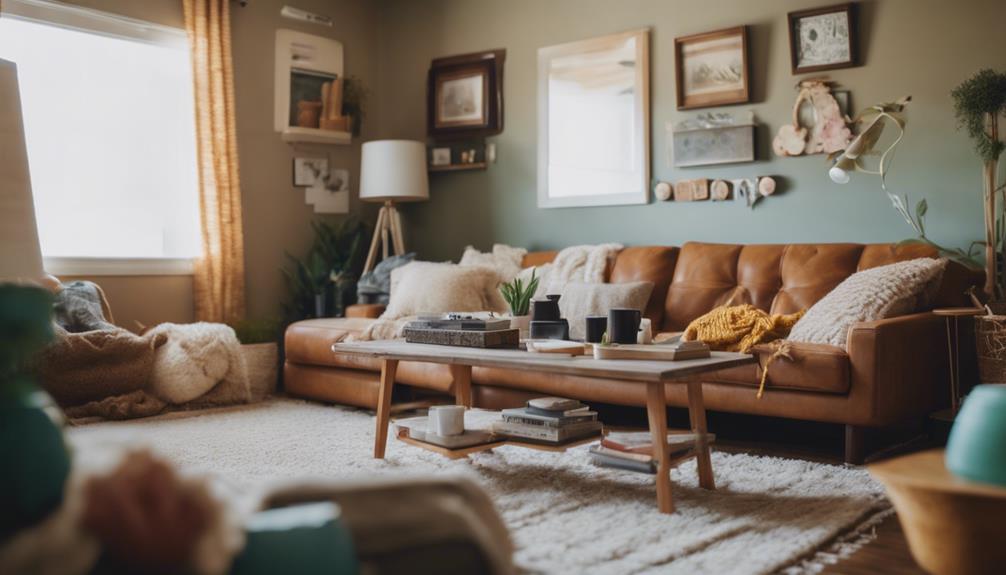
To decorate your home on a budget, try exploring thrift stores, garage sales, or online marketplaces for affordable decor pieces. Embrace budget-friendly decor ideas by engaging in DIY projects using materials like paint, fabric, or repurposed items.
Get creative with upcycling and repurposing existing items in your home to give them a new life and save money. Look out for sales and clearance items at home decor stores to find discounted prices that fit your budget.
Utilize online tutorials and inspiration for cost-effective decorating ideas that align with your financial limits. By incorporating these strategies, you can achieve a stylish and personalized home decor without breaking the bank.
Lighting and Furniture Placement
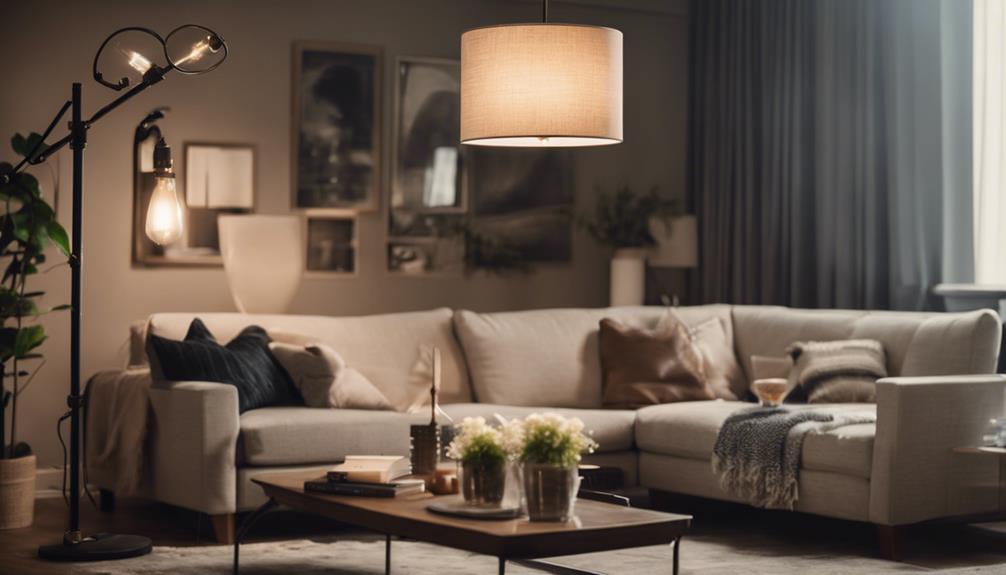
When setting up your home decor, consider how lighting options and furniture arrangement can transform your space.
Proper lighting placement can enhance functionality and ambiance, while strategic furniture placement is key for creating visually appealing and functional rooms.
Lighting Options
Consider incorporating a mix of ambient, task, and accent lighting to effectively illuminate each room while enhancing its functionality and aesthetic appeal. Here are some key tips to help you choose the best lighting options for your home:
- Variety is Key: Use a combination of ambient lighting to provide overall illumination, task lighting for specific activities like reading or cooking, and accent lighting to highlight architectural features or artwork.
- Dim the Lights: Install dimmer switches to adjust the brightness levels according to different needs and moods, allowing for flexibility in creating the desired ambiance.
- Energy Efficiency Matters: Opt for energy-efficient LED bulbs that not only save on electricity costs but also contribute to reducing your environmental footprint.
- Strategic Placement: Consider how lighting placement can affect the overall ambiance and functionality of the room. Use lighting to emphasize design elements, create focal points, and enhance the overall aesthetic of the space.
Furniture Arrangement
Enhance the overall ambiance and functionality of your rooms by strategically arranging furniture to promote good traffic flow and create functional spaces for socializing and relaxation.
When arranging furniture, consider creating conversation areas that encourage interaction. Guarantee that the pieces are proportionate to the room size and complement the room's focal point.
Varying heights in furniture placement can add visual interest and depth to the overall design of the room.
Proper lighting is also essential to enhance the ambiance and functionality of a space. Aim for a mix of ambient, task, and accent lighting to create the right mood for different activities. Dimmer switches offer flexibility in adjusting lighting levels to suit various tasks and moods.
Textures and Accessories
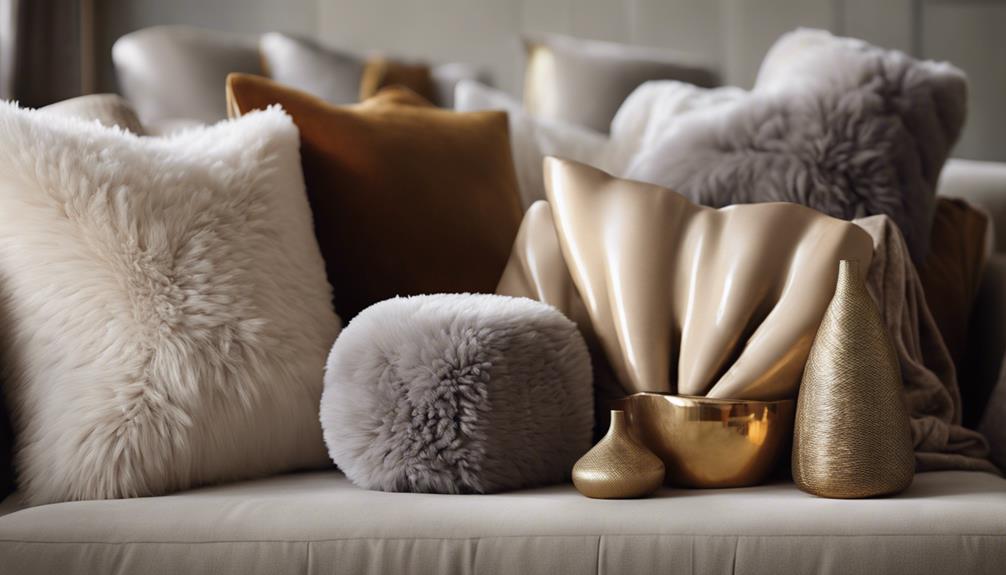
To create a cozy and luxurious ambiance in your home decor, mix textures like velvet, silk, and faux fur. These textures not only provide comfort but also add visual interest and depth to your living spaces.
Here are some expert tips for incorporating textures and accessories into your home decor:
- Throw Pillows: Experiment with different textures and patterns to add pops of color and coziness to your sofas and chairs.
- Metallic Accents: Introduce glamour and sophistication by incorporating metallic accents like gold, silver, or bronze in your decor elements.
- Natural Elements: Bring a sense of warmth and organic beauty into your home by incorporating natural elements such as wood, stone, or plants as accessories.
- Textured Wall Art: Create a unique focal point in your room by hanging textured wall art like woven tapestries or macrame pieces, enhancing the overall ambiance.
Personalization and Room Layout
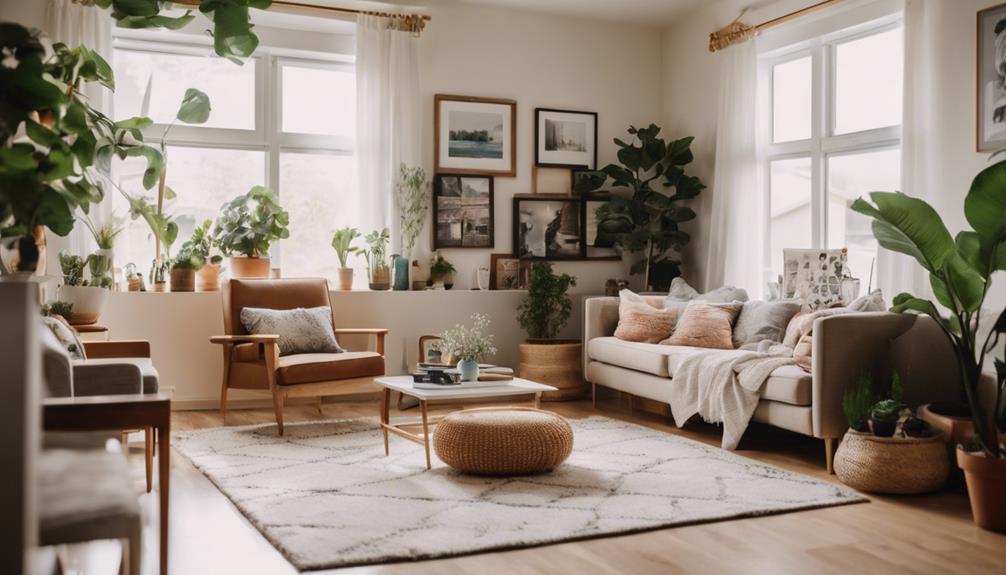
Personalizing your home decor involves infusing your living spaces with items that reflect your unique style and interests. When considering personalization and room arrangement, it's vital to blend functionality with visually appealing elements. Room setup significantly influences the flow and comfort of a space.
Before moving furniture, plan the layout to guarantee a harmonious arrangement that aligns with your preferences. Incorporate personal touches like family heirlooms or artwork to make the room inviting and reflective of your personality. Rugs play an important role in anchoring furniture groupings and adding warmth to the space.
Conclusion
Now that you've got all the expert tips under your belt, it's time to put them into action and transform your home into a stylish sanctuary.
Remember to mix and match different styles, colors, and textures to create a personalized space that reflects your unique personality.
And don't forget to have fun with it – after all, your home decor should be a reflection of you and your style!
Happy decorating!
